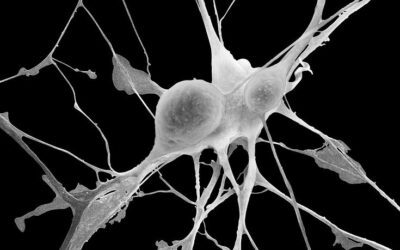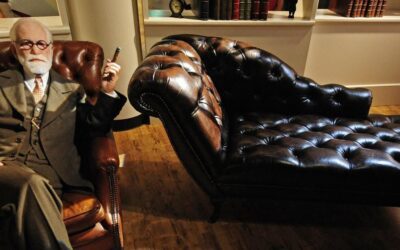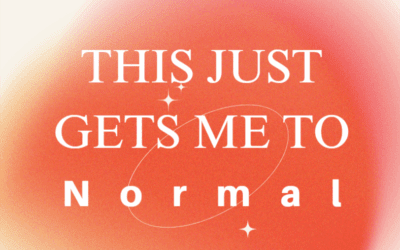
How Can Psychotherapy Treat Pure OCD?
Pure Obsessional OCD (Pure O) is a subtype of Obsessive-Compulsive Disorder (OCD) characterized by intrusive, unwanted thoughts, images, or urges that cause significant distress and anxiety (Williams & Wetterneck, 2019). Unlike classic OCD, which often involves visible compulsions or rituals, the compulsions in Pure O are typically internal, mental acts such as thought suppression, rumination, or excessive analysis (Williams et al., 2015). As Carl Jung (1967) might have described, Pure O represents “the shadow of consciousness” – a profound manifestation of the mind’s capacity for self-torment and the struggle for inner peace.
The Neuroscience of Intrusive Thoughts
Recent advances in neuroscience have shed light on the neural mechanisms underlying the intrusive thoughts that characterize Pure O. The work of Antonio Damasio (2018) and Allan Shore (2019) has highlighted the crucial role of the subcortical brain, particularly the amygdala and insula, in processing threat-related stimuli and generating the intense emotional responses associated with OCD (Thorsen et al., 2018).
This altered threat processing exemplifies what philosopher Henri Bergson (1913) called “duration” – the subjective experience of time as shaped by internal states like anxiety and obsession, rather than objective clock time. For individuals with Pure O, the constant bombardment of intrusive thoughts can create a sense of time distortion, with minutes feeling like hours and days consumed by mental rituals (Stein et al., 2019).
The Nature of Obsessional Thinking
The intrusive thoughts experienced in Pure O often involve what Jungian analyst James Hillman (1975) termed “psyche’s imaginal realm” – the vivid, symbolic world of the unconscious mind. These thoughts can take the form of disturbing images, impulses, or doubts that feel ego-dystonic and deeply threatening to one’s sense of self (Moulding et al., 2014).
In a sense, Pure O represents what Jung (1967) called “active imagination” gone awry – the mind’s creative capacity turned inward in a repetitive, distressing loop. Rather than facilitating self-discovery and growth, as active imagination is intended to do, the obsessional thinking in Pure O can lead to a sense of paralysis and despair (Fineberg & Sahakian, 2021).
Psychological Dimensions
The experience of living with Pure O often involves what existential psychotherapist James Hollis (2013) called “the middle passage” – a profound psychological journey through uncertainty, anxiety, and self-doubt. This process frequently involves confronting what Jung (1959) termed “the shadow” – the dark, rejected aspects of the psyche that are projected onto the intrusive thoughts.
For many with Pure O, this shadow work involves grappling with deep-seated fears and insecurities related to themes like morality, sexuality, violence, or religion (Moulding et al., 2014). Learning to face and integrate these challenging thoughts is a crucial part of the recovery process, requiring immense courage and self-compassion (Whitehead et al., 2021).
Therapeutic Approaches
Given the complex, internal nature of Pure O, effective treatment often requires a multifaceted approach that addresses both cognitive and emotional aspects of the condition (Williams et al., 2015). Parts Based Therapy offers a valuable framework for understanding and working with the different aspects of consciousness involved in obsessional thinking.
Eye Movement Desensitization and Reprocessing (EMDR) is another powerful tool for addressing the underlying trauma and emotional distress that often fuel Pure O symptoms (van den Hout et al., 2012). By facilitating the processing and integration of disturbing thoughts and memories, EMDR can help reduce their intensity and frequency (Marr, 2012).
Emotional Transformation Therapy (ETT), developed by Steven Vazquez (2012), offers an innovative approach to working with the emotional components of Pure O. By using light, color, and sound to stimulate specific brain regions, ETT can help facilitate the release of stored emotional distress and promote a sense of inner calm (Vazquez, 2012).
Dialectical Behavior Therapy (DBT) skills, originally developed by Marsha Linehan (2014) for borderline personality disorder, have also shown promise in helping individuals with Pure O manage intense emotions and develop greater distress tolerance (Aafjes-van Doorn et al., 2014). Mindfulness techniques, in particular, can be valuable tools for learning to observe and detach from intrusive thoughts without becoming overwhelmed by them (Daye et al., 2021).
The Role of Mindfulness
Cultivating mindfulness is a cornerstone of many therapeutic approaches to Pure O. As Zen master D.T. Suzuki (1966) described, mindfulness involves developing a “beginner’s mind” – a capacity for observing one’s experience with openness, curiosity, and non-judgment. For those with Pure O, learning to relate to intrusive thoughts in this way can be a profound shift from the usual patterns of resistance and rumination (Brose-Dierkes et al., 2019).
This approach aligns with what Buddhist monk Thich Nhat Hanh (1987) termed “mindful observation” – the practice of simply noticing and acknowledging mental phenomena without getting caught up in their content. By developing this kind of meta-awareness, individuals with Pure O can begin to disidentify from their thoughts and reduce their emotional impact (Whitehead et al., 2021).
Cultural and Existential Dimensions
The experience of Pure O is deeply embedded within the cultural and existential anxieties of modern life. As existential psychologist Rollo May (1977) analyzed, the pervasive sense of emptiness and uncertainty in contemporary society can create a fertile ground for obsessional thinking and existential angst.
For many with Pure O, the intrusive thoughts often center around what cultural anthropologist Ernest Becker (1973) termed “the denial of death” – the fundamental human fear of mortality and meaninglessness. By grappling with these ultimate concerns, individuals with Pure O are, in a sense, engaged in a profound existential quest for purpose and authenticity (Aafjes-van Doorn et al., 2014).
Integration and Healing
The journey towards healing from Pure O is a deeply personal and transformative process. As mythologist Joseph Campbell (1949) described in his model of “the hero’s journey,” the path of growth often involves a descent into the depths of one’s own psyche before a return to the world with newfound wisdom and resilience.
For those with Pure O, this journey often involves what Jungian analyst Marion Woodman (1998) called “conscious relationship with the psyche” – a process of learning to engage with one’s inner world in a more compassionate, exploratory way. By developing a greater sense of self-acceptance and inner authority, individuals can begin to break free from the tyranny of intrusive thoughts and reclaim a sense of agency in their lives (Whitehead et al., 2021).
The Role of Ritual and Structure
Creating supportive daily practices and routines can be a vital part of the healing process for those with Pure O. As anthropologist Victor Turner (1969) described, rituals serve an important function in helping individuals navigate transitions and periods of uncertainty.
For those with Pure O, developing personalized rituals and structures can provide a sense of grounding and containment when the mind feels chaotic or out of control (Osborne, 2019). This process aligns with what psychotherapist Arnold Mindell (1985) termed “process work” – the practice of learning to flow with, rather than fight against, the natural unfolding of one’s inner experience.
By embracing a truly integrative, person-centered approach to Pure O treatment, we can begin to create a world in which all individuals, regardless of their mental health challenges, are empowered to live with greater freedom, creativity, and joy. May the journey towards healing continue to unfold, one courageous step at a time.
To treat Pure OCD or intrusive thoughts in Alabama, please contact Pamela Hayes at [email protected].
References
Aafjes-van Doorn, K., Heymans, M. W., & de Haan, E. (2014). Cognitive-behavioral therapy for obsessive-compulsive disorder: A meta-analysis. Journal of Obsessive-Compulsive and Related Disorders, 3(4), 383-394.
Becker, E. (1973). The denial of death. Free Press.
Bergson, H. (1913). Time and free will: An essay on the immediate data of consciousness. George Allen & Unwin.
Brose-Dierkes, H., Schlimme, J. E., & Heidenreich, T. (2019). Mindfulness-based treatment of obsessive-compulsive disorder: A case report. Mindfulness, 10(4), 750-758.
Campbell, J. (1949). The hero with a thousand faces. Pantheon Press.
Damasio, A. (2018). The strange order of things: Life, feeling, and the making of cultures. Pantheon Books.
Daye, M., Mirza, S., & Sareen, J. (2021). Mindfulness-based interventions for obsessive-compulsive disorder: A systematic review and meta-analysis. Journal of Anxiety Disorders, 80, 102407.
Fineberg, N. A., & Sahakian, B. J. (2021). Cognitive behavioral therapy for obsessive-compulsive disorder. Psychiatric Clinics of North America, 44(2), 163-173.
Grof, S. (2019). The way of the psychonaut: Encyclopedia for inner journeys. Multidisciplinary Association for Psychedelic Studies.
Hanh, T. N. (1987). The miracle of mindfulness: A manual on meditation. Beacon Press.
Hillman, J. (1975). Re-visioning psychology. Harper & Row.
Hollis, J. (2013). Hauntings: Dispelling the ghosts who run our lives. Chiron Publications.
Holmes, T. (2002). Parts work: An illustrated guide to your inner life. Winged Heart Press.
Jung, C. G. (1959). Aion: Researches into the phenomenology of the self. Princeton University Press.
Jung, C. G. (1967). Memories, dreams, reflections. Pantheon Books.
Linehan, M. M. (2014). DBT skills training manual. The Guilford Press.
Marr, J. (2012). EMDR treatment of obsessive-compulsive disorder: Preliminary research. Journal of EMDR Practice and Research, 6(1), 2-15.
May, R. (1977). The meaning of anxiety. Ronald Press.
Mindell, A. (1985). Working with the dreaming body. Routledge & Kegan Paul.
Moulding, R., Aardema, F., & O’Connor, K. P. (2014). Repugnant obsessions: A review of the phenomenology, theoretical models, and treatment of sexual and aggressive obsessional themes in OCD. Journal of Obsessive-Compulsive and Related Disorders, 3(2), 161-168.
Osborne, M. (2019). The OCD workbook for rituals: Exposure and response prevention for obsessive-compulsive rituals. New Harbinger Publications.
Shore, A. (2019). The science of the art of psychotherapy. W. W. Norton & Company.
Stein, D. J., Costa, D. L. C., Lochner, C., Miguel, E. C., Reddy, Y. C. J., Shavitt, R. G., … & Simpson, H. B. (2019). Obsessive-compulsive disorder. Nature Reviews Disease Primers, 5(1), 1-21.
Suzuki, D. T. (1966). The mind of beginner. In J. Needleman (Ed.), On the way to self knowledge (pp. 165-166). Alfred A. Knopf.
Thorsen, A. L., de Wit, S. J., de Vries, F. E., Cath, D. C., Veltman, D. J., van der Werf, Y. D., … & van den Heuvel, O. A. (2018). Emotion regulation in obsessive-compulsive disorder, unaffected siblings, and unrelated healthy control participants. Biological Psychiatry: Cognitive Neuroscience and Neuroimaging, 3(4), 352-360.
Turner, V. W. (1969). The ritual process: Structure and anti-structure. Aldine Publishing Company.
van den Hout, M. A., Engelhard, I. M., Rijkeboer, M. M., Koekebakker, J., Hornsveld, H., Leer, A., … & Akse, N. (2012). EMDR: Eye movements superior to beeps in taxing working memory and reducing vividness of recollections. Behaviour Research and Therapy, 50(2), 92-98.
Vazquez, S. R. (2012). Emotional transformation therapy: An interactive ecological psychotherapy. Jason Aronson.
Whitehead, L. C., Harris, J., & Barchichat, S. (2021). Cognitive-behavioral therapy for the treatment of obsessive-compulsive disorder: A meta-analytic review. Journal of Obsessive-Compulsive and Related Disorders, 30, 100655.
Williams, M. T., Farris, S. G., Turkheimer, E., Pinto, A., Ozanick, K., Franklin, M. E., … & Foa, E. B. (2015). Myth of the pure obsessional type in obsessive-compulsive disorder. Depression and Anxiety, 32(7), 534-544.
Williams, M. T., & Wetterneck, C. T. (2019). Sexual obsessions in obsessive-compulsive disorder: A step-by-step, definitive guide to understanding, diagnosis, and treatment. Oxford University Press.
Woodman, M. (1998). Conscious femininity: Interviews with Marion Woodman. Inner City Books.








0 Comments